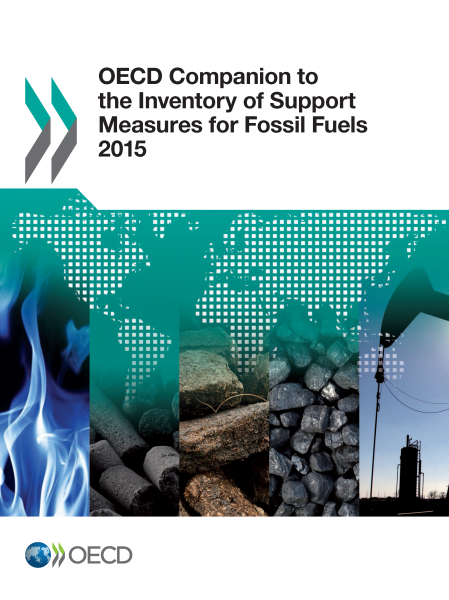I'll say right up front that I am not an unbiased observer of this particular effort by OECD to tabulate support measures to fossil fuels. I've collaborated with Ron Steenblik, one of the project supervisors, for decades at this point; and with project manager Jehan Sauvage since his early days of deciding to enter the bizzarre-but-fascinating world of energy subsidies. I also contributed directly to the 2013 version of the Inventory. (Access the report and associated data via this link).
Since I started working on subsidy issues more than 25 years ago, a key goal was always to take this whole area of perniciously invisible support -- distortions that were surreptitiously undermining our economies and our environment -- and to force it into the fore where it would become an unavoidable part of policy discussions and make the subsidies much harder to defend. I clearly think what OECD is doing here is very important.
 But it is because of this long involvement that I can see the many ways in which the current work moves the ball on subsidy transparency and reform. Here are some of them:
But it is because of this long involvement that I can see the many ways in which the current work moves the ball on subsidy transparency and reform. Here are some of them:
- Capturing the policy-level details for more supports; filling in pieces missing from price gap. Measuring the gap between market prices and domestic prices for fossil fuels (the "price gap" approach used in subsidy estimates by IEA and the World Bank) is by no means easy, and in many countries is still the only way to assess government support. But the metric does not capture everything. Further, the reform of subsidies is, at its root, a political rather than an economic battle. The politics lie not with national aggregate figures but with individual tax rules and grant programs. It is these policy details that set the fault lines that drive or block reform. Although tracking these supports is time consuming and often quite challenging, if you want to see the points of distortion, prioritize the worst ones, and have a focal point around which others can organize politically for reform, you need the line-item detail.
- Expanding the countries evaluated beyond the OECD member states. The challenges OECD faced in getting the first fossil fuel subsidy inventory off the ground were very big. I am gratified to see this newest update cement the OECD data collection effort as an important and integral part of the move towards transparency in fossil fuel subsidy reporting around the world. Of particular note is that this edition expanded beyond OECD member countries, with the important addtion of Brazil, Russia, India, and China.
- Inclusion of both national and sub-national supports. It is increasingly recognized that the market distortions and environmental damage from particular fossil fuel activities may not be visible by looking at any particular support in isolation. Rather, the combination of support policies flowing to a single economic actor or activity (often referred to as "subsidy stacking") needs to be evaluated as a group. In addition to a growing range of supports captured, the OECD Inventory continues to be one of the few resources to include state and provincial subsidies rather than just national policies.
- Free access to detailed subsidy data, under the oversight of OECD.Stat. The 2015 Inventory brings with it a big expansion in data access. The information is now housed at the OECD Statistics group, and will benefit from their strong reputation and ability to manage the information over time. The data sets include granular policy-level estimates, and OECD's decision to make the information available at no charge on the internet will greatly leverage the ability of other researchers to build on OECD's work.
- Build-out of time series. Each iteration of the Inventory brings in additional years of coverage, providing a much clearer picture of policy change over time. Rather than publish just the most recent data, OECD is presenting the full historical time series.
Two years from now, in 2017, the next update will arrive. As with the 2015 Inventory, my hope is that the next one will also include a number of important innovations. The area I would particularly like to see is an expansion of the types of support systematically reviewed and captured. Right now, the Inventory primarily captures tax expenditures and direct government support. For the next update, my hope is that government subsidies via credit markets, indemnification, and preferential market rules (e.g., dispatch order that puts coal plants first) would also be captured; and that the coverage of all policy types at the sub-national level continues to expand.